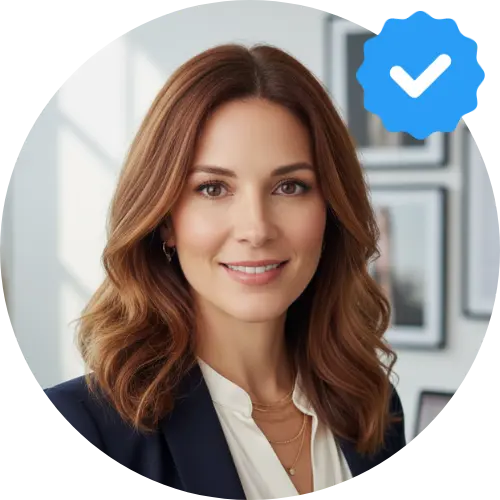Your design portfolio is basically your dating profile for dream clients - and honey, we need to talk about why yours might be getting swiped left. 😏 I've been in the design world for years now, and tbh, I see the same tired mistakes over and over. But here's the thing: making your portfolio absolutely irresistible isn't about having the fanciest tools or the biggest budget.
Let's be real - your portfolio is competing with thousands of others for attention. Every potential client is scrolling through dozens of designers, and you've got maybe 3 seconds to make them stop and think "damn, I need to work with this person." That's where pro-grade techniques come in, and I'm about to spill all the secrets I wish someone had told me when I was starting out.
The Psychology Behind Portfolio Design That Converts
Ever wonder why some portfolios just hit different? It's not magic - it's psychology. When someone lands on your portfolio, their brain is making split-second decisions about your credibility, style, and whether you "get" their vision.
Research shows that people form first impressions within 50 milliseconds of viewing a website. That's faster than you can blink! This means every single element on your portfolio homepage needs to work overtime to create that perfect first impression.
I learned this the hard way when I realized my old portfolio was basically a digital graveyard. Beautiful work, sure, but zero personality and no clear story. The moment I started thinking about my portfolio as a conversation starter rather than just a gallery, everything changed.
Storytelling: Your Secret Weapon for Emotional Connection
Here's what most designers get wrong - they think portfolios are about showing off their technical skills. Nope. Your portfolio needs to tell a story that makes clients think "this person understands me and my problems."
Start each project with context. Not just "I designed a logo for Company X" but "Company X was struggling to connect with millennial customers who saw them as outdated and irrelevant. Here's how I helped them bridge that gap..." See the difference?
Your story should follow a simple structure:
• The challenge (what problem were you solving?)
• Your approach (how did you tackle it?)
• The outcome (what amazing results did you achieve?)
This isn't just about the work - it's about positioning yourself as a problem-solver, not just a pixel-pusher. Clients don't hire designers; they hire solutions to their problems.
Visual Hierarchy That Guides the Eye Like a Pro
Okay, let's talk about something that separates amateur portfolios from pro-level ones: intentional visual hierarchy. Your portfolio should guide visitors' eyes exactly where you want them to go, when you want them to go there.
Think of it like choreographing a dance. You want people to see your strongest work first, understand your process, and then feel compelled to reach out. This means being ruthless about what gets prime real estate on your homepage.
I use what I call the "grandmother test" - if my grandmother (bless her heart) can't figure out what I do and how to contact me within 10 seconds, my hierarchy is broken. Your most important information should be impossible to miss.
The Power of White Space
White space isn't empty space - it's breathing room for your ideas. I used to cram everything onto my pages because I thought more = better. Wrong! White space actually makes your work look more expensive and professional.
Think about luxury brands. They don't fill every inch of their packaging with text and graphics. They use space to create elegance and focus. Your portfolio should do the same thing.
Curating Your Work Like a Gallery Director
This might sting a little, but quality absolutely trumps quantity. I see portfolios with 47 projects, and honestly? It's overwhelming. Your portfolio isn't a museum of everything you've ever created - it's a carefully curated exhibition of your best work.
Here's my rule: if you wouldn't be thrilled to create 10 more projects exactly like this one, it doesn't belong in your portfolio. Be brutal. That project you did for your cousin's friend's startup three years ago? If it's not representing your current skill level and the type of work you want to attract, cut it.
I recommend 8-12 strong projects maximum. Each one should showcase a different skill or solve a different type of problem. Think of it as showing your range without diluting your message.
The 'Before and After' Magic
One technique that never fails to impress clients is showing transformation. Whether it's a rebrand, a website redesign, or even just showing your design process from sketch to final product - people love seeing the journey.
Before and after shots are like design porn. They show your impact in a way that's immediately understandable, even to non-designers. Plus, they position you as someone who can take something ordinary and make it extraordinary.
Technical Excellence That Doesn't Sacrifice Soul
Let's talk about the technical stuff that makes portfolios feel professional vs. amateur. Your portfolio needs to load fast, look gorgeous on every device, and work flawlessly. There's no excuse for broken links or wonky mobile layouts in 2024.
But here's where a lot of designers go wrong - they get so focused on technical perfection that they forget about personality. Your portfolio should be technically excellent AND feel authentically you.
I learned this lesson when I hired a developer to build my "perfect" portfolio. It was technically flawless but felt like it could belong to any designer. The moment I added back some personality - my actual voice, some behind-the-scenes photos, even a little humor - inquiries doubled.
Loading Speed That Doesn't Kill Conversions
Nobody's waiting around for your portfolio to load. Studies show that 40% of people will abandon a website that takes more than 3 seconds to load. For creative portfolios with lots of images, this is especially crucial.
Optimize your images without sacrificing quality. Use formats like WebP when possible. And for the love of good design, test your portfolio on different devices and internet speeds. That gorgeous 4K hero image might look amazing on your high-end monitor, but it's useless if it takes 30 seconds to load on mobile.
Personal Branding That Makes You Unforgettable
Your portfolio isn't just showcasing your work - it's showcasing you. Clients hire people they like and trust, not just portfolios they admire. This means your personality needs to shine through every page.
I'm not saying you need to overshare or be inappropriate. But letting people see the human behind the design makes you memorable. Maybe it's your process photos, your design philosophy, or even just how you write your project descriptions.
One of my favorite portfolio additions was a simple "Currently" section where I share what I'm working on, learning, or obsessing over. It's updated regularly and gives visitors a peek into my world beyond just finished projects.
The About Page That Actually Matters
Your About page might be the most important page in your portfolio, and it's probably the most neglected. This isn't the place for a boring resume-style bio. It's where you connect with potential clients on a human level.
Share your story. What led you to design? What problems do you love solving? What makes you different from every other designer out there? And please, include a photo of yourself. People want to know who they're potentially working with.
Strategic Contact Information and Calls-to-Action
I can't tell you how many gorgeous portfolios I've seen that make it nearly impossible to actually hire the designer. Your contact information should be visible on every page, and your calls-to-action should be clear and compelling.
Don't just say "Contact me." Tell people exactly what will happen next. "Let's chat about your project" or "Ready to get started?" feels much more inviting than generic contact language.
And btw, make it easy for people to reach you in their preferred way. Some people love email, others prefer phone calls, and some want to schedule directly. Give options without overwhelming them.
Frequently Asked Questions
How many projects should I include in my portfolio?
Quality over quantity, always. I recommend 8-12 strong projects that showcase your range and represent the type of work you want to attract. Each project should tell a complete story and demonstrate different skills or solve different problems.
Should I include work from when I was just starting out?
Only if it still represents your current skill level and the type of work you want to do. Your portfolio should show your best work, not your complete work history. It's better to have 6 amazing projects than 15 mixed-quality ones.
How often should I update my portfolio?
Update it whenever you complete work that's stronger than something currently in your portfolio, or at least every 6 months. Your portfolio should always reflect your current capabilities and the direction you want your career to go.
Do I need to show my design process?
Absolutely! Showing your process helps clients understand your value beyond just the final product. It demonstrates your strategic thinking, problem-solving abilities, and professional approach. Plus, it helps justify your pricing.
Should my portfolio work on mobile devices?
Non-negotiable yes. Many clients will first view your portfolio on their phone or tablet. If it doesn't work perfectly on mobile, you're losing potential clients before they even see your work. Test on multiple devices and screen sizes.
Bottom Line
Creating a portfolio that actually converts isn't about following every design trend or having the most expensive tools. It's about understanding that your portfolio is a sales tool disguised as a creative showcase. Every element should work toward one goal: making potential clients excited to work with you. 🎯
The techniques I've shared here aren't just theory - they're battle-tested strategies that have helped countless designers land their dream clients. Start with one or two changes, see how they impact your inquiries, then keep refining.
Remember, your portfolio is never truly "finished." It should evolve as you grow as a designer and as your goals change. The key is making sure it always tells the story you want to tell and attracts the clients you actually want to work with.
Now stop reading and go make your portfolio impossible to ignore! ✨




